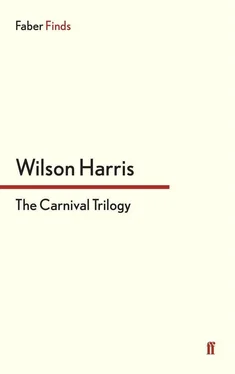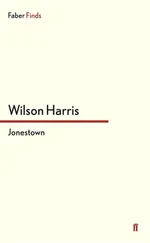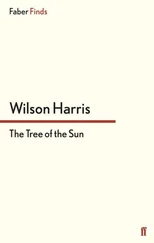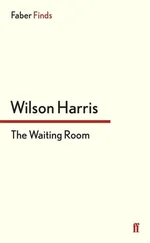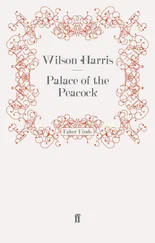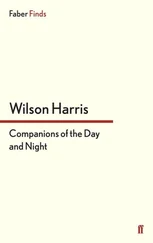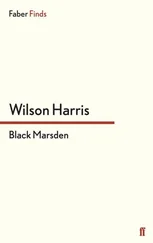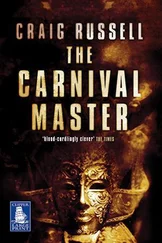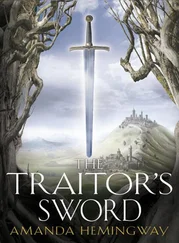I recall coming upon a group of Macusi Indians in the Potaro river in British Guiana in the mid-1940s. They told me Canaima was active amongst them and in pursuit of some obscure wrong he had judged their people had done — some crime they had committed in the past — and as a consequence he was spiriting away their young men and maidens. It is hard to describe their state of misery in the face of Canaima who is indeed a formidable legend associated with the enactment of revenge upon wrongdoers. The pathology of revenge in him becomes a form of evil.
It is important to note in charting the parallel with Homeric epic that Canaima may appear in an encampment — intent on sowing fire like a terrorist or causing some bitter distress — and be recognized as a neighbour, as one’s cousin, or someone’s brother or father. Yet the following day when the recognized person is cornered he makes a good case for being somewhere else, hunting, fishing. An uncanny confusion overwhelms the tribe. Not only are they confused about the crime they or their antecedents have committed and which brought Canaima into their midst but they are confronted by an abyss within which lurks the identity of terror. If only they could seize the instrument Canaima uses!
The instrument becomes both spectral and concrete. And this explains in some degree the ascendancy of the camera amongst deprived peoples. If they are to deal with such spectrality, such concreteness, a shift has to occur in the premises of their reading of reality in the sky, in the land, in the river, everywhere. That shift seems almost impossible in a mass-media world and yet a moment may have arrived when the apparatus, the instrumentalities we take for granted, are susceptible to cross-cultural and re-visionary momentum. Take the camera. Disadvantaged peoples become pawns of the camera. Their ills are made visible to millions of viewers and then they fade from the news. The camera becomes a weapon with which we shoot an animal or a savage and bring him home as a trophy in the television box. There are passages in The Four Banks of the River of Space which extend the complications I have raised but I wish to restrict my emphasis to the matter of weaponry and instrument.
A camera is a weapon in some instances. In other instances it is an extension of the caring eye. It could also be a private excursion into the future through recorded relics of memory. Each relic implies a fossil dimensionality that enriches the present and the future. The camera is also an eye of spirit as when one encounters people — as I did in a market place in Mexico City — who are alarmed that their souls may be imprinted or captured on the glass eye staring at them.
If all this is true of the camera how much more varied are the weapons and instruments of past civilizations. The bow of Ulysses in Homer’s epic is not the same bow for us. How it lived for him, how it felt to him, the faint tremor and music of the string, the sound of the wind that whispered in the branches of trees from which the bow came are not the same for us. But tremor, sound, wind, incomparable composition at the heart of words may awaken us to the mystery of trees, the precious life of trees. The abyss that has opened between ourselves and Homer — the greatest of epic poets — nourishes a fantastic and mysterious continuity that breaks a pattern of sameness, same bow, same arrow, even as it enriches the numinous raw material from which we fashion a bow, or a vessel, or a ship.
To destroy our rainforests now is to place our civilization upon another hill of Calvary. The three crosses fashioned from trees become the eloquent masts of a sinking ship from which Robin Redbreast Glass would be taxed, as never before, to arise. A bow, or a ship, or a camera, or a sword, or a knife, or an axe are not singular or same objects. They are instinct with pluralities. On one level that instinct cements violence. On another level we fashion, and are fashioned by, the enigma of constructive truth. The two levels or forces resemble each other but they are not the same.
The resemblance cannot be dismissed however. It achieves an overlap that resists absolute model or formula. There is no absolute model for constructive truth. There is no absolute imprint upon violence. Justice can be tainted by revenge. The resemblance assists us to make differentiations that are sometimes shockingly new in abysmal circumstance between our proneness to violence (as a solution to the world’s ills) and a blow we may strike that liberates our prepossessions, unshackles our bondage to fate. The latter blow is inimitably creative, inimitably constructive, in apprising us of the burdens of an imperilled globe that may only be borne in intimate and far-reaching alignment to strangers who are pertinent to us as we are pertinent to them. This issue of knowing ourselves, recognizing ourselves differently, implies a creative/re-creative penetration or blow directed at models of tradition whose partiality engenders an accumulation of crisis.
That such accumulation is visible everywhere makes clear, I would think, the rituals of sameness, of repetitive slaughter ingrained in violence within the symbols of world politics. One returns to the issue of instrumentality, the life of the extended body, in visualizing the stranger in ourselves. The mould of revenge gives way to profoundest self-confessional imagination. We may not recognize ourselves in the evil-doer but our dismemberment at his hands need not be a prescription for ultimate self-destruction. To jettison such a prescription is to perceive within the threat of a dismembered world an instrumentality that has chiselled us, shaped us, across aeons of space. We cannot seize such instrumentality but we can release in it, from it, proportions that begin to overturn the aboriginal tautologies that condition our responses to evil. Evil seems to be evil for ever and ever until it voids self-confessional creativity. In The Four Banks Canaima, the evil-doer, returns to Anselm, the good man, after forty years. Alarming as it appears Canaima has changed. He has been dislodged within the instrumentality of a cosmos he abused. An abused cosmos which has shaped one, sculpted one, across aeons and evolutions, is a paradox no one can solve. Can one abuse a creator that has sculpted one, written the word of being into dust and marble and flesh? The extremities of evil are woven into such a paradox which Canaima begins to illumine when he returns to Anselm in a Dream.
Canaima the fury becomes a redemptive daemon. Has not Anselm, the good man, the architect, the saint — in the nameless proportions of artifice and instrumentality, religion and law which have their roots in well-nigh forgotten pagan realms — conspired inadvertently with powers that bred catastrophe? Canaima’s return therefore is self-reversal in such illumined conspiracy. His return is an illumination of restrictive vision into shared evil, shared faculty of redemption through the arts and sciences that have been abused in the prosecution of fundamental causes.
Anselm sets out on his Odyssey into the past with Canaima’s dislodged knife in his side. It is as if he gathers up into his arms — in a wholly new, abysmal, terrifyingly creative light — the corpse of the bird-dancer Canaima had slain forty years previously on the bank of the Potaro river in South America. The corpse is but a mask to be worn by endangered species whose life is now wholly precious, sacred.
Canaima’s knife … had metaphorically killed me … pierced me to the core of the body’s waking instrument.
The Body’s Waking Instrument. The arousal of the body to itself as sculpture by a creator one abuses. The body wakes to itself as inimitable art, inimitable multi-faceted, living fossil extending into all organs, objects, spaces, stars, and the ripple of light. Wakes also to self-confessional blindness, blindness to self-destruction and the destruction of others.
Читать дальше
